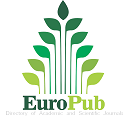Pertumbuhan Generasi Pertama (G1) Hasil Silangan Merawangarab Umur 1-12 Minggu
Keywords:
first generation (G1), growth, merawangarab (MA)
Abstract
Merawang and arab are 2 Indonesia local chicken that have potensial to be developed. Crossing of merawang and arab chicken aims to improve genetic quality of local chickens. G1 MA as results interse of MA is expected to be developed as local chicken producing eggs. To produce superior laying hens, growth of ages 1 to 12 weeks is very important because starter ang grower phasethis is the critical phase to produce superior laying hens. This study aimed to examine the growth of G1 MA as a result of MA interse crosses compared to MA (Go) aged 1-12 weeks. The number of DOC of G1 MA chicken is 98 birds and DOC of Go MA chicken 1s 147 birds. The 100% commercial feed for broiler starter phase until the age of 3 weeks and age > 3 weeks began to be mixed with rice bran gradually so that the age > 5-12 weeks was given a mixture of 60% commercial feed and 40% rice bran. The variables measured were body weight, consumption, feed conversion, and mortality. The data obtained were t test. The results of the weight of the DOC G1. The results of the weight of the DOC G1 MA were significantly heavier than the MA, but with no different growth rates, the average age of 12 weeks G1 MA and MA in the same sex were not different, G1 MA and Go MA male chicken were 1099 and 1087 g respectivelly, while females were 976 and 970 g, feed consumption ranging 3 759 - 3 812 g, and feed conversion ranging from 3.67 to 4.11. The growth Conclusion, G1 MA and Go MA had composition genetic 50% merawang chicken and 50% arab chicken had same growth performance.Downloads
Download data is not yet available.
Published
2019-05-24
How to Cite
DarwatiS., NurcahyaH., AfnanR., MaulanaV. S., & RohamtullahP. (2019). Pertumbuhan Generasi Pertama (G1) Hasil Silangan Merawangarab Umur 1-12 Minggu. Jurnal Ilmu Produksi Dan Teknologi Hasil Peternakan, 6(2), 67-72. Retrieved from https://journal.ipb.ac.id/index.php/ipthp/article/view/26181
Section
Articles















